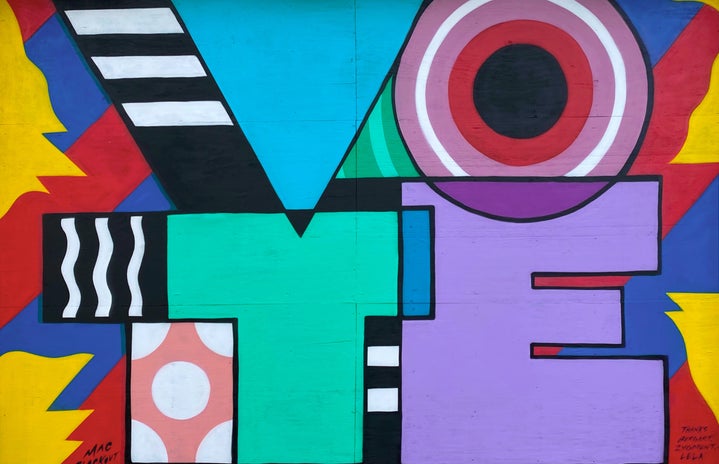Art has from its beginning been used as a tool of expression. Its creation is one of the great inventions of humanity and is something that can resonate with anyone and tell any story. One individual’s artwork can invoke intense emotions or spark ideas in its viewers and it can travel from person to person and be interpreted in diverse ways.
In addition to being wonderful to look at, the impactfulness of art can be used in ways to advocate for change, comment on society, and educate people on key issues. This has been done historically, but now is more accessible and widespread as ever as we have social media to disseminate art to a great number of people across the world. The range of topics is immense as are the mediums used to make works of art from paintings, murals, photography, dance, song, and literature.
For example, conservation photographer Cristina Mittermeier (@mitty on Instagram) uses her photographs to communicate conservation stories and science, with a specific focus on humanity’s connection with nature. In many of her works, she uses images as a way to showcase Indigenous and/or minority groups who are being affected by environmental issues, such as her photo essay “Brazil’s Threatened Tribe, Damned by a Dam” on the Kayapo tribe’s struggle over displacement from their lands due to a dam. Viewers may never have heard of this tribe before, but through photography, they are able to visualize their experiences and way of life and feel compelled to learn more about the subject.
Something I’ve recently been thinking more about are protest signs as art. In looking at images from different movements such as the Climate March, March for Our Lives, the Women’s March, and the Black Lives Matter movement, the protester’s signs and banners are all deeply striking whether they have a simple slogan or detailed paintings that ignite a call to action. This isn’t a new phenomenon as protest graphics have long been used to speak out, such as the famous “Silence=Death” political poster that became a symbol of the AIDS movement in 1987 and many of the anti-war images protesting the Vietnam War during the 1960s and 1970s depicting both messages of peace and anger. What makes protester art stand out is the individuality of the messages and images involved. Each poster is made by someone who has their own unique connection to a social movement and is wanting to add something to the conversation.
This year especially there has been a lot of advocacy work and the highlighting of social movements have really come into our cultural spotlight, as many of the inequalities and systems of oppression have been exposed and reexamined. One of the most striking art series that I’ve encountered this year is Adrian Brandon’s Stolen Series. The Brooklyn-based artist (@ayy.bee on Instagram), who is inspired by and portrays the Black experience in his work, sketches a series of portraits of the individuals who have been killed by police brutality and gun violence. In each of the portraits, Brandon sets a timer in minutes equal to the age the person was at the time of their death and within that time frame colors in the portraits using Copic markers. For example for Tamir Rice, who was 12 when he was killed, Brandon only colors for 12 minutes. He has done portraits for Breonna Taylor, George Floyd, and Michael Brown, among many others. Most of the portraits barely have their faces colored in, parallelling how much of their life was taken away.
Art like Brandon’s means something. It visually communicates to the world messages that may normally be overlooked or not thought of in a certain way. Art can make you confront an idea or theme that you may have been able to avoid before, but in the moment of seeing it as you scroll through Instagram or watch it on the news, you have to think about what it means. In a communication driven world, art is one of the keys to creating successful and impactful movements of change.



